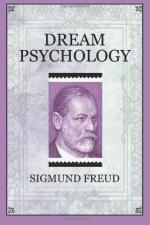There are symbols of universal circulation, found in all dreamers, of one range of speech and culture; there are others of the narrowest individual significance which an individual has built up out of his own material. In the first class those can be differentiated whose claim can be at once recognized by the replacement of sexual things in common speech (those, for instance, arising from agriculture, as reproduction, seed) from others whose sexual references appear to reach back to the earliest times and to the obscurest depths of our image-building. The power of building symbols in both these special forms of symbols has not died out. Recently discovered things, like the airship, are at once brought into universal use as sex symbols.
It would be quite an error to suppose that a profounder knowledge of dream symbolism (the “Language of Dreams”) would make us independent of questioning the dreamer regarding his impressions about the dream, and would give us back the whole technique of ancient dream interpreters. Apart from individual symbols and the variations in the use of what is general, one never knows whether an element in the dream is to be understood symbolically or in its proper meaning; the whole content of the dream is certainly not to be interpreted symbolically. The knowledge of dream symbols will only help us in understanding portions of the dream content, and does not render the use of the technical rules previously given at all superfluous. But it must be of the greatest service in interpreting a dream just when the impressions of the dreamer are withheld or are insufficient.
Dream symbolism proves also indispensable for understanding the so-called “typical” dreams and the dreams that “repeat themselves.” Dream symbolism leads us far beyond the dream; it does not belong only to dreams, but is likewise dominant in legend, myth, and saga, in wit and in folklore. It compels us to pursue the inner meaning of the dream in these productions. But we must acknowledge that symbolism is not a result of the dream work, but is a peculiarity probably of our unconscious thinking, which furnishes to the dream work the matter for condensation, displacement, and dramatization.
[1] Freud, “Three Contributions to Sexual Theory,” translated by A.A. Brill (Journal of Nervous and Mental Disease Publishing Company, New York).
[2] The words from “and” to “channels” in the next sentence is a short summary of the passage in the original. As this book will be read by other than professional people the passage has not been translated, in deference to English opinion.—TRANSLATOR.
IV
DREAM ANALYSIS




